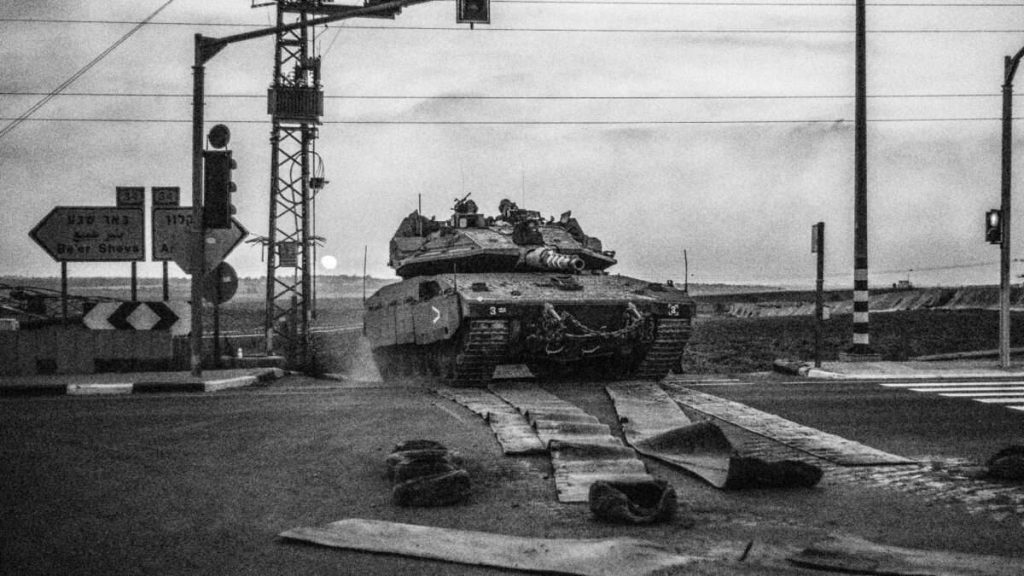One year ago, on October 7, 2023, Hamas terrorists swarmed across the border from Gaza in a stunning and bloody attack on southern Israel. Roughly 1,200 people were killed, the vast majority civilians. The attack set off a still-escalating conflict that raises questions about how far people can go to defend themselves and what constitutes legitimate targets for military strikes. But it also posed a stark choice between good and evil, innocents and terrorists—and some people around the world are picking the wrong side.
That murderous attacks on unsuspecting civilians and the kidnapping of hundreds of them—some still in captivity—constitute unjustifiable acts of terrorism is beyond question. Surprisingly, though, there’s no generally accepted definition of terrorism, because governments like to keep the term vague so it doesn’t encompass their own actions and perhaps so it can be applied to domestic political opponents.
Terrorism Means Targeting Civilians
Decades ago, in a class taught by a retired U.S diplomat who worked for years in the Middle East, I was told the best way to distinguish terrorism from military action is that terrorism deliberately targets civilians rather than government officials or military personnel. That squares with a 2004 report by the office of the U.N. Secretary General that framed terrorism as “any action ‘intended to cause death or serious bodily harm to civilians or non-combatants with the purpose of intimidating a population or compelling a government or an international organization to do or abstain from doing any act.'”
This doesn’t mean that purely military action is necessarily justified—whether it’s right or wrong depends on the rationale. But when civilians are the main target, there’s no need to consider the cause; that’s terrorism, it’s evil, and it’s time to hunt down the perpetrators and bring them to justice.
October 7, When Mostly Civilians Suffered
On October 7, the attack began with a barrage of thousands of rockets launched from Gaza into Israel. Then approximately 1,500 terrorists in the employ of Hamas, an Iran proxy which runs Gaza, and its allies breached the border wall or bypassed it by paraglider and motorboat. About 1,200 people died at the hands of the terrorists by guns, bombs, rape and sexual torture, blades, and fire, especially among residents of nearby kibbutzes and attendees at the Supernova music festival.
“Authorities have identified a total of 274 soldiers and 859 non-soldiers killed during the brutal assault,” the Times of Israel reported last December. Removing police and security guards from the total still “leaves a figure of 764 civilians,” the Times added.
“The assault dwarfs all other mass murders of Israeli civilians,” The Economist noted. “The last time before October 7th that this many Jews were murdered on a single day was during the Holocaust.”
Not immediately killed were hundreds of hostages seized by Hamas and its partners. Some have since been released in exchange for concessions, and some have been rescued. Others have been murdered in captivity. A few have been held for a year and are hopefully still alive, including four Americans.
The correct reaction is to recognize that terrorists who target civilians for murder, rape, and kidnapping deserve contempt. They should be on the receiving end of efforts to make sure they’re apprehended, killed, or otherwise rendered incapable of again committing such acts. Terrorism isn’t an act that might be justified if you have a sufficiently strong grievance; it’s slaughter and brutalization of the innocent to spread fear while bypassing those who might fight back. It deserves an equally brutal response.
The Limits of a Just Response
That doesn’t mean anything goes in punishing terrorists. There’s room for debate about the tactics that can be used to target Hamas and the degree to which civilians can be put at risk as Israeli forces search for those responsible for October 7. It’s a dilemma amplified by the fact that Hamas, like many terrorist organizations, embeds itself among civilians in schools, medical centers, and residential neighborhoods to make punishing its members impossible without putting the innocent at some degree of risk.
“With Hamas locating themselves alongside important places like hospitals, Hamas has actually made Israel fight them in places Israel wouldn’t want to target them, because of the potential loss of civilian life,” American University School of International Service Professor Benjamin Jensen observed last November. “And in doing so, look at how fast Israel lost momentum in its information war. Israel is taking a huge amount of criticism for its killing of civilians as it goes after Hamas.”
Risks can be mitigated. As the conflict expanded to include Hezbollah, which has rendered much of Israel near the Lebanese border uninhabitable with rocket attacks and violent incursions, Israel planted bombs in pagers and walkie-talkies used by Hezbollah personnel to hit the guilty and reduce danger to innocent people. Inevitably, though, a few civilians were killed and wounded. Conventional attacks on Hezbollah’s leadership have been very effective, but also killed and wounded civilians located near the targets.
Is that too many civilian casualties? Nobody has an easy answer regarding any conflict. A public health paper published in 2021 estimated that civilians made up 28 percent of all casualties during America’s involvement in Afghanistan, about half of casualties during the Balkan War, about a quarter of casualties after Russia’s first invasion of Ukraine, and a whopping two-thirds of casualties during the war in Iraq.
Terrorists Rely on the Deaths of Innocents
Accepting the moral compromises of armed conflict is a hell of a challenge. But aggressors count on that and are happy to see innocents killed and wounded to insulate their people from consequences.
Civilian casualties are “necessary sacrifices”, Hamas military leader Yahya Sinwar—who may have since died—told colleagues in correspondence published by The Wall Street Journal. “In dozens of messages—reviewed by The Wall Street Journal—that Sinwar has transmitted to cease-fire negotiators, Hamas compatriots outside Gaza and others, he’s shown a cold disregard for human life,” the report added.
Such calculated evil leaves people in a bind. Some have chosen to embrace terrorists as freedom fighters, as if supposed grievances matter when the chosen weapons are murder, rape, and kidnapping. Protests against the war resulting from October 7 feature symbols and slogans in favor of Hamas and other terrorists. France’s President Emmanuel Macron wants an arms embargo against Israel. Antisemitism is globally on the rise as those who favor terrorists expand their hate from Israel to all Jews.
Let them speak. Those who embrace evil reveal themselves to us and let us know where the next threat might arise. If they go beyond speech to action, we’ll already have them on our radar. Those who have already engaged in terrorism should be hunted and punished to prevent a recurrence of such crimes.
The post October 7 Offered a Stark Choice Between Good and Evil appeared first on Reason.com.






